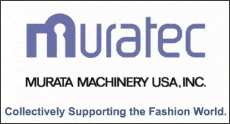
Posted September 5, 2017
Water scarcity affects more than 40 percent of the global population, a number that is projected to rise. While about 2.5 percent of the world’s water is fresh water, only 0.5 percent of that amount is made available to satisfy society’s needs.
Water is also an important resource in manufacturing processes, including in the textile sector. Reducing water consumption by establishing sustainable production processes can therefore be an advantage for companies as well as the communities they operate in. This is widely reflected in the United Nations’ Sustainable Development Goals, which aim, among other things, to ensure sustainable production by companies and water access for all by 2030.
DNV GL and the United Nations Industrial Development Organization (UNIDO) have jointly developed a self-assessment tool to assist textile companies in evaluating the water footprint in manufacturing processes. This will help them make more informed decisions about how to manage water consumption in their supply chains.
“The textile processing industry is heavily dependent on water in virtually all steps of the production process, from desizing to bleaching and dyeing. It has one of the most extensive water footprints of all sectors,” said Smail Alhilali, Industrial Development officer and manager of the Global Resource Efficiency and Cleaner Production (RECP) program at UNIDO. “That's why we have developed this tool, which is a measure for textile companies to obtain a better understanding of their resource efficiency and insight into where they can reduce consumption.”
Antonio Astone, Global Sustainability manager at DNV GL – Business Assurance, added that “DNV GL and UNIDO have a common interest in combating water scarcity and improving industry awareness of water-related risks and opportunities. This is an area where companies have a significant potential for improvement and we are pleased to use our combined expertise to help industries assess and reduce their water footprint.”
The Global Network for Resource Efficient and Cleaner Production (RECPnet), supporting organizations in more than 60 developing countries, will facilitate the use of the tool, which primarily targets small and medium-sized companies. It will guide companies on the use of the tool and interpretation of results.
The tool is available here.
For more information, please contact Alhilali here or Astone here.
Source: DNV GL and UNIDO
New tool to help textile industry reduce water consumption unveiled

Textile dyeing. Photo by Renè van Berkel, UNIDO.

Denim plant. Photo by Renè van Berkel, UNIDO.

Textile dyeing. Photo by Renè van Berkel, UNIDO.


Smail Alhilali












